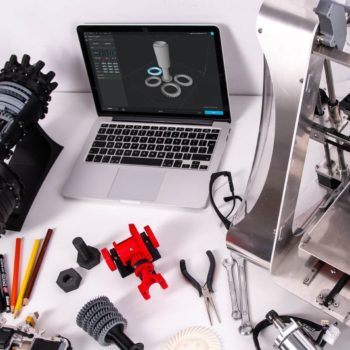 For a successful 3D print, check for these three common STL file errors first.
For a successful 3D print, check for these three common STL file errors first.
STL files are a way to transfer the data of your design to the 3D printer in a language the 3D printer will understand. “There are several different file types, but STL file is the most common file format used for rapid prototyping, 3D printing and in most CAD software. STL files are most suitable for the 3D printing process. It encodes the geometry of a 3D object which means it creates the surface that the 3D printer will print.” (Sculpteo)
Saving your CAD file in STL file format does not guarantee that you will have a successful print though. As we have mentioned before, 3D printing isn’t a simple push button technology, your STL file needs to be optimized and error free for a successful print. Below are three common errors we encounter when receiving STL files for 3D printing.
Multi-body/Nesting Parts into a Single File
In order to print your file, the data sent to the 3D printer must contain one single, solid object. Overlapping objects in your STL file will tell the 3D printer to draw twice in that area, which leads to errors.
For assemblies or part files with multiple bodies that need to be built as a single, merged part, the native CAD file needs to be modified so that it contains a single, solid body. Any components that aren’t intended to be part of the 3D print should be removed from the file. Hiding these bodies can cause errors when exporting to STL, so they should be removed entirely. Once all extra bodies have been removed, all remaining surface bodies should be knit/stitched together to form solid bodies. Then, all solid bodies should be combined. (Protolabs)
Resolution is Not Optimized (Too High or Too Low)
The 3D printer will not be able to print your design if the resolution is not just right. One major factor that helps decide resolution pertains to the material you plan to use. Knowing the 3D printing technology and material will help you optimize resolution in your STL file.
You need to adjust the complexity of your object accordingly to the thickness of the layers of the 3D printed model. Setting right STL resolution is the key factor here. The printer won’t be capable of 3D printing models’ surface if it’s too detailed with the limitation of layer thicknesses. (Sculpteo)
Files are Not “Watertight”
Most 3D printing software requires your design to be “watertight” in order to print correctly. When we say “watertight” we mean that the object should be a single and entirely closed volume. In essence, if your item were to be filled with water, there would not be any gaps for the water to leak out. If your STL file has gaps, your print will encounter issues.
When it comes down to it, optimizing your STL file will lead to less material waste while decreasing the cost of your print.
Have additional questions about 3D printing or STL files? Send us an email at info@3d-innovations.com
_____
3D Innovations is a Product Development Company – from the 3D Design to a fully functional 3D Prototype & Product.
Subscribe to the 3D Innovations newsletter on our Facebook page!

